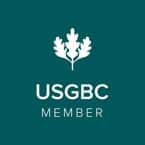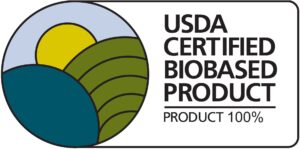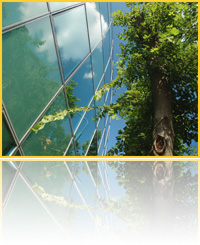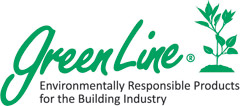Building Green
BLUE RIDGE FIBERBOARD is green.
Composed of all-natural earth-friendly wood chips, BLUE RIDGE FIBERBOARD products not only utilize renewable natural resources, but also aid in energy efficiency.
Blue Ridge Fiberboard Sustainability Chart
| SOUNDSTOP | STRUCTODEK HD | PREMIUM INSULATING SHEATHING | CANT STRIP & TAPERED EDGE | |
| MR Credit BPDO-Environmental Product Declaration, Industry-Wide As per ISO 21930, the net biogenic carbon emissions across A1, A2, and A3 modules is zero (carbon neutral). |
• | • | • | • |
| MR Credit BPDO-Sourcing of Raw Materials, 75% pre-consumer waste wood |
• | • | • | • |
| MR Credit BPDO-Material Ingredients, Health Product Declaration |
• | • | ||
| MR Credit BPDO-Sourcing of Raw Materials, Opt. 2, intentionally added materials 90% Bio-based content material |
• | • | • | • |
| No added formaldehyde | • | • | • | • |
| Biobased binder | • | • | • | • |
| Product ingredients intentionally added have been screened against chemicals listed in the Living Building Challenge Red List 4.0, April 2023 and do not contain any of the listed ingredients. | • | • | • | • |
| CDPH Standard Method v1.2 MAS Certified Green® Low-Emitting Materials |
• | • | • | • |
| Biobased adhesive | •* | • | ||
| Buy American Act | • | • | • | • |
| USDA® BioPreferred Program 100% Bio-based content material per ASTM 6866-22 Method B |
• | • | • | • |
| Acoustical Performance, Sound Transmission Class 23 | • | |||
| *1″ STRUCTODEK only |

USDA Certified Biobased Products – 100% Bio-Based Content Material
These products have 100% biobased carbon content as tested by ASTM 6866-22 Method B (Accelerator Mass Spectrometry) Total Organic Carbon.
This biobased content is third-party verified data as administered through the USDA BioPreferred® Program.
This program strives to increase the development, purchase, and use of biobased products.
Biobased products help by:
- offering renewable alternatives
- sequestering carbon dioxide
- creating and expanding markets and
- assisting Federal Agencies in meeting their purchasing mandates for biobased products.
The USDA Certified Biobased Product Label displays a product’s biobased content, which is the portion of a product that comes from a renewable source, such as plant, animal, marine, or forestry feedstocks.
In the latest Economic Impact Report released by USDA, the biobased products industry
- supported 4.6 million American jobs
- contributed $470 billion to the U.S. economy and
- generated 2.79 jobs in other sectors of the economy for every biobased job.
Specifiers have been asking for more biobased products and BLUE RIDGE FIBERBOARD is proud to offer products with third-party verified biobased content!
About the USDA BioPreferred Program
With the goal of increasing the development, purchase, and use of biobased products, USDA’s BioPreferred® Program was first introduced in the 2002 Farm Bill and reauthorized in 2018.
More than 1,800 companies across the U.S. and in 47 countries participate in the Program.
It requires federal agencies and contractors to give purchasing preference to biobased products.
The USDA BioPreferred Program also includes a voluntary certification and labeling initiative for biobased products.
This is referred to as the USDA Certified Biobased Product Label.
About ASTM D6866 for Biobased Content Testing
https://www.betalabservices.com/biobased/astm-d6866.html
Living Building Challenge (LBC) Red List Letters
- CANT STRIP
- PREMIUM INSULATING SHEATHING
- SOUNDSTOP
- STRUCTODEK HD WITH PRIMED RED COATING
- STURDY-DEK
- TAPERED EDGE
CDPH VOC Emissions Certificates
- SOUNDSTOP
- STRUCTODEK HD WITH PRIMED RED COATING
- PREMIUM INSULATING SHEATHING
- CANT STRIP
- TAPERED EDGE
Wood is a carbon-smart building material choice!
Reducing and reversing the acceleration of global warming happens by making carbon-smart choices. BLUE RIDGE FIBERBOARD captures and stores the CO2 inherent in wood fibers which locks up this carbon for the lifetime of the installation.
Carbon dioxide is taken up by trees and, through photosynthesis, is stored as carbon in wood fibers.
Using residual softwood chips as the source material for fiberboard insulation locks in carbon for the life of the building installation.
As trees grow, they absorb carbon dioxide from the atmosphere during the process of photosynthesis, emitting oxygen and utilizing the carbon to create the very roots, trunk, branches and leaves of the tree.
This process is called carbon sequestration and is the capturing of carbon dioxide from the atmosphere and storing it. One cubic meter of wood can trap approximately 1 ton of carbon dioxide. To put this concept into perspective, the EPA states an average car emits about 4.6 metric tons of CO2 per year.
UNECE (United Nations Economic Commission for Europe) emphasizes that the use of wood in the construction industry reduces CO2 emissions by 30% when used instead of steel. Throughout the life of a wooden structure, its wood components store and restrict the release of carbon dioxide.


As members of the U. S. Green Building Council and a Green Building Initiative Supporter, BLUE RIDGE FIBERBOARD is helping to build a greener future with products not only designed for high performance and quality but with the needs of the environment as a primary focus.
BLUE RIDGE FIBERBOARD products consist of pre-consumer content (wood chips). The binding agent used in the making of BLUE RIDGE FIBERBOARD fiberboard is also an all-natural product, consisting of vegetable starch containing no added formaldehydes.
BLUE RIDGE FIBERBOARD’s manufacturing process is specially designed to be environmentally friendly and accomodating, minimizing post-industrial waste by actively recycling waste materials back in to the process.
A quality product should offer superior results without sacrificing the environment. BLUE RIDGE FIBERBOARD remembers its earth-friendly promise to keep quality high and environmental impact low.
BLUE RIDGE FIBERBOARD: The environmentally responsible choice.
The American Wood Council (AWC) and Canadian Wood Council (CWC) represent wood products manufacturers across North America. The AWC and the CWC are please to present this Environmental Product Declaration (EPD) for North American cellulosic fiberboard.
Environmental Product Declaration

Case Study


Follow Us